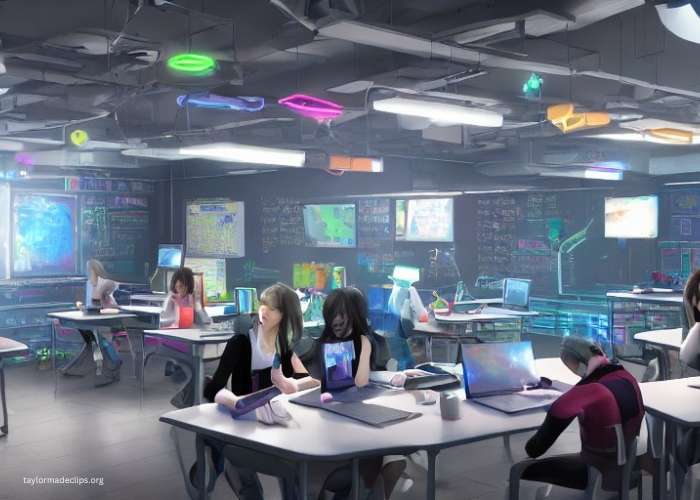In the 21st century, education is undergoing a seismic transformation, driven by technological advancements that have reshaped every facet of human life. One of the most profound impacts of technology is observed in the field of education, where it is helping to bridge learning gaps, enhance accessibility, and personalize learning experiences. This article delves into the various technological innovations that are revolutionizing education and their role in overcoming the traditional challenges of learning.
The Digital Divide and Access to Education
Historically, access to quality education has been a privilege, often determined by geographic location, socioeconomic status, and availability of resources. However, with the advent of the internet and digital tools, the education landscape is becoming more inclusive. Online learning platforms, such as Coursera, Khan Academy, and edX, provide free or affordable access to high-quality education to anyone with an internet connection. These platforms offer courses from leading universities and institutions, enabling learners from underserved communities to access the same quality of education as those in more privileged circumstances.
Moreover, mobile technology has further democratized access to education. In many parts of the world, especially in developing countries, mobile phones are more prevalent than computers. Educational apps and mobile-friendly websites are making learning more accessible and adaptable to the needs of diverse populations. For instance, in India, BYJU’s learning app has transformed how students prepare for competitive exams by offering interactive video lessons and quizzes that can be accessed anytime, anywhere.
Personalized Learning Through Artificial Intelligence
Artificial Intelligence (AI) is at the forefront of personalizing education. AI-powered learning platforms can analyze a student’s performance in real-time, identifying strengths, weaknesses, and learning preferences. This data-driven approach allows for the creation of customized learning paths that cater to the individual needs of each student, enhancing their learning experience and outcomes.
For example, platforms like DreamBox and Smart Sparrow use AI algorithms to adapt the difficulty level of lessons in real-time, ensuring that students remain challenged yet not overwhelmed. This approach not only caters to fast learners but also provides additional support to those who may struggle with certain concepts, ensuring that no student is left behind.
AI also facilitates intelligent tutoring systems (ITS), which provide personalized feedback and support to students outside the traditional classroom setting. These systems can simulate one-on-one tutoring by identifying areas where a student may need extra help and providing targeted interventions. By offering a tailored learning experience, ITS helps bridge gaps in understanding and promotes mastery of subjects.
Virtual and Augmented Reality in Education
Virtual Reality (VR) and Augmented Reality (AR) are transforming education by creating immersive learning experiences. These technologies allow students to explore and interact with complex subjects in a more engaging and intuitive way. For example, VR can transport students to historical events or distant planets, offering a first-hand experience that textbooks simply cannot provide. This experiential learning approach enhances understanding and retention, making abstract concepts more tangible and easier to grasp.
In medical education, VR simulations enable students to practice surgical procedures in a risk-free environment, honing their skills before performing on real patients. Similarly, AR apps can bring diagrams and models to life, allowing students to visualize and manipulate 3D representations of molecules, cells, or historical artifacts. This interactive learning experience not only makes education more engaging but also caters to different learning styles, bridging gaps for visual and kinesthetic learners.
The Role of Learning Analytics
Learning analytics is another technological innovation that is bridging learning gaps by providing insights into student behavior and learning patterns. By collecting and analyzing data from various educational tools and platforms, educators can gain a better understanding of how students engage with content, what challenges they face, and how they can be better supported.
For instance, learning management systems (LMS) like Moodle and Canvas offer built-in analytics tools that track student participation, assignment submissions, and performance on assessments. This data helps educators identify at-risk students early on and intervene with targeted support, such as additional tutoring or customized learning materials. Learning analytics also enables a more proactive approach to education, where interventions are based on predictive models rather than reactive measures.
Furthermore, learning analytics can inform curriculum design by highlighting which topics or teaching methods are most effective. This evidence-based approach ensures that educational content is continually refined to meet the evolving needs of students, ultimately enhancing the quality of education.
Gamification: Making Learning Fun and Effective
Gamification, the application of game-design elements in non-game contexts, has proven to be a powerful tool in education. By incorporating elements such as points, badges, and leaderboards, gamification can make learning more engaging and motivate students to achieve their educational goals. Research has shown that gamified learning can improve student engagement, boost motivation, and enhance retention of knowledge.
For example, Duolingo, a popular language-learning app, uses gamification to encourage users to complete lessons and practice regularly. The app’s use of streaks, rewards, and competitive leaderboards makes language learning more enjoyable and less daunting. Similarly, platforms like Kahoot! and Quizizz use game-based quizzes to reinforce learning in a fun and interactive way, helping to bridge learning gaps by making education more accessible and enjoyable.
The Rise of Collaborative Tools
Collaboration is a crucial aspect of modern education, and technology has made it easier than ever for students to work together, regardless of geographical location. Tools like Google Workspace, Microsoft Teams, and Zoom have become essential in facilitating group work, discussions, and collaborative projects. These tools allow students to collaborate in real-time, share resources, and provide peer feedback, fostering a sense of community and collective learning.
Moreover, collaborative tools support project-based learning (PBL), an educational approach that emphasizes hands-on, real-world problem-solving. PBL encourages students to work together to explore complex questions and develop solutions, fostering critical thinking and teamwork skills. By using technology to facilitate collaboration, educators can bridge the gap between theoretical knowledge and practical application, better preparing students for the challenges of the modern world.
Overcoming Language Barriers with Technology
Language can be a significant barrier to education, especially in multicultural and multilingual societies. However, technology is helping to overcome this barrier by providing tools for language translation and multilingual education. Platforms like Google Translate and Microsoft Translator enable real-time translation of text, speech, and images, making it easier for students to access educational content in their preferred language.
Additionally, language learning apps like Babbel and Rosetta Stone offer courses in multiple languages, catering to diverse linguistic needs. These tools not only help non-native speakers learn the language of instruction but also promote cultural exchange and understanding. By breaking down language barriers, technology is making education more inclusive and accessible to all.
The Future of Tech-Driven Education
As technology continues to evolve, so too will its impact on education. Emerging technologies like blockchain, for example, have the potential to revolutionize how educational credentials are verified and shared, making it easier for students to showcase their skills and achievements. Similarly, advancements in artificial intelligence and machine learning could lead to even more personalized and adaptive learning experiences, further bridging gaps in education.
Moreover, as the world becomes increasingly interconnected, the importance of digital literacy cannot be overstated. Educators must not only integrate technology into the classroom but also teach students how to use it responsibly and ethically. By fostering digital literacy and critical thinking skills, educators can prepare students to navigate the complexities of the digital world and thrive in a technology-driven future.
Conclusion
Technology is transforming education in unprecedented ways, breaking down barriers and bridging learning gaps that have long existed. From personalized learning and immersive experiences to collaborative tools and gamification, technological innovations are making education more accessible, engaging, and effective. As we continue to explore the possibilities of technology in education, it is essential to ensure that these tools are used to promote equity, inclusivity, and lifelong learning. The future of education is tech-driven, and by embracing these innovations, we can create a more just and equitable world for all learners.




